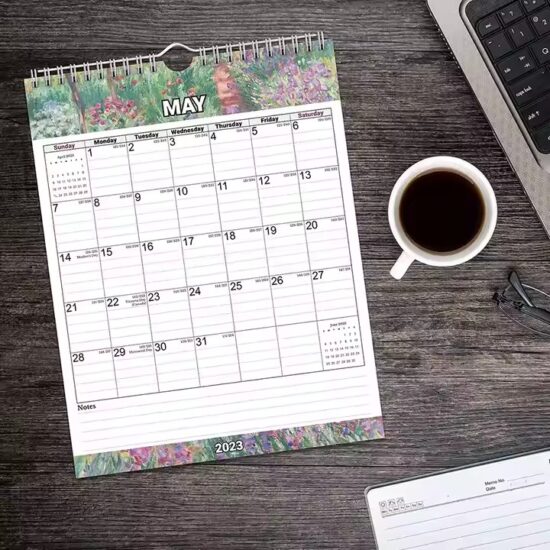bob@nbdho.com
Detailed Explanation of Common Types and Sizes of Planner Calendars
Detailed Explanation of Common Types and Sizes of Planner Calendars
Planner calendars come in a wide variety of types and sizes, tailored to meet different planning preferences, lifestyles, and industries. Whether you’re a manufacturer looking to expand your product range or a buyer seeking the perfect planner format, understanding the distinctions between types and sizes is essential.
Below is a comprehensive breakdown of the most common planner calendar formats and their standard dimensions.
📘 Common Types of Planner Calendars
1. Daily Planners
-
Description: Provide a full page (or section) for each day. Ideal for busy individuals with packed schedules.
-
Use Cases: Executives, managers, entrepreneurs, students.
-
Features: Time blocks, to-do lists, notes section, priority highlights.
2. Weekly Planners
-
Description: Display one week across two pages. Balance between space and overview.
-
Use Cases: Most popular format for general users.
-
Features: Weekly goals, appointments, habit trackers, weekly reflections.
3. Monthly Planners
-
Description: Show one full month per two-page spread. Great for high-level planning.
-
Use Cases: Project managers, event coordinators, content creators.
-
Features: Monthly goals, deadlines, major events, notes column.
4. Undated Planners
-
Description: Allow users to start planning anytime, without pre-set dates.
-
Use Cases: Flexible users, custom planners, niche gifting.
-
Features: Blank date fields, free layout control.
5. Academic Planners
-
Description: Designed around school calendars (usually August–July).
-
Use Cases: Students, teachers, school administrators.
-
Features: Class schedule templates, grade trackers, exam countdowns.
6. Goal-Oriented or Wellness Planners
-
Description: Focused on achieving personal, fitness, or business goals.
-
Use Cases: Fitness trainers, entrepreneurs, life coaches.
-
Features: Progress tracking, vision boards, habit monitoring, gratitude journaling.
7. Pocket Planners / Mini Planners
-
Description: Compact planners ideal for portability.
-
Use Cases: Salespeople, travelers, anyone on-the-go.
-
Features: Minimal layout, monthly/weekly views, sturdy covers.
📏 Common Sizes of Planner Calendars
Planners come in a variety of sizes depending on format, usability, and regional preferences. Here are the most widely used:
| Size Name | Dimensions (inches) | Dimensions (mm) | Usage Notes |
|---|---|---|---|
| Pocket / Mini | 3.5″ × 5.5″ | 90 × 140 mm | Ultra-portable, basic overview |
| A6 | 4.1″ × 5.8″ | 105 × 148 mm | Compact and lightweight |
| B6 | 4.9″ × 6.9″ | 125 × 176 mm | Popular in Asia, good size for journaling |
| Personal | 3.7″ × 6.7″ | 95 × 170 mm | Slim, often used in leather planners |
| A5 | 5.8″ × 8.3″ | 148 × 210 mm | Most common size, versatile and portable |
| Half Letter | 5.5″ × 8.5″ | 140 × 216 mm | U.S. standard binder-friendly |
| B5 | 6.9″ × 9.8″ | 176 × 250 mm | More writing space, still easy to carry |
| A4 / Full Size | 8.3″ × 11.7″ | 210 × 297 mm | Best for desks, project planning, teachers |
| Letter Size | 8.5″ × 11″ | 216 × 279 mm | Standard U.S. paper size, office use |
🔄 Choosing the Right Type & Size
When selecting or producing planner calendars, consider the following:
-
Target audience (students, professionals, creatives, etc.)
-
Primary use case (daily task tracking, goal-setting, scheduling)
-
Preferred portability (desk use vs. travel use)
-
Regional standards (e.g., A4 vs. Letter size)
Customization, binding types (spiral, hardcover, refillable), and cover designs also play a key role in matching product offerings to consumer expectations.
Conclusion
The planner calendar market offers numerous types and sizes to suit virtually every lifestyle and professional niche. Understanding these formats not only helps with smarter product development but also empowers customers to choose tools that truly enhance their productivity and planning satisfaction.

